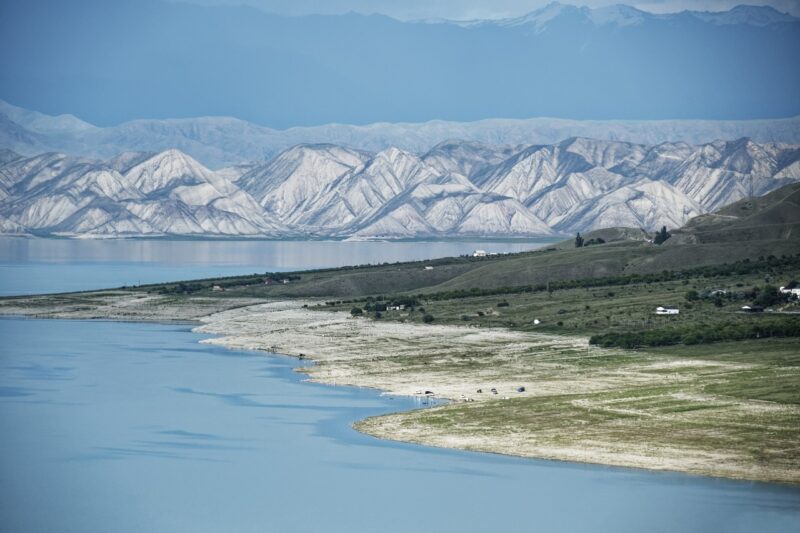How Dams Impact Rivers and the Surrounding Ecosystem: A Look at the Pros and Cons
November 14, 2024

Dams are monumental structures that play a significant role in water management and the generation of hydroelectric power. However, their impact extends far beyond the water they contain. Understanding how dams affect rivers and their ecosystems is crucial to realizing a balance between human needs and environmental sustainability.
In this article, we will delve into the multifaceted effects that dams have on aquatic environments, their surrounding ecosystems, and society as a whole. We will explore their benefits, drawbacks, and the necessity for thoughtful management to minimize ecological disruption.
1. The Purpose and Functionality of Dams
Dams serve various purposes, including:
- Water Supply: Dams store water to ensure a reliable supply for agriculture, domestic use, and industrial processes, especially in arid climates.
- Hydroelectric Power Generation: Hydropower is one of the largest renewable energy sources, helping reduce reliance on fossil fuels and lowering greenhouse gas emissions.
- Flood Control: Dams can mitigate flooding risks by controlling river flow, protecting nearby communities from sudden inundations.
- Recreation: Reservoirs created by dams provide opportunities for recreational activities like boating, fishing, and camping.
However, the operation of dams may also lead to unintended consequences, particularly concerning ecological health and biodiversity.
2. Positive Impacts of Dams on Rivers and Ecosystems
While dams can have detrimental effects, they also yield certain benefits:
- Water Regulation: Dams regulate water flow, which can stabilize river ecosystems. This regulation is crucial in regions with seasonal variations in rainfall, ensuring a consistent supply of water throughout the year.
- Habitat for Wildlife: Many reservoirs created by dams can become habitats for various species, offering new ecological niches that can support diverse plants and animals not present in the original river ecosystem.
- Enhanced Fishery Management: In some cases, controlled environments provided by reservoirs can enhance fishing opportunities through managed releases of water and nutrients into downstream habitats.
Despite these benefits, it’s important to consider the broader ecological implications of damming a river.
3. Negative Consequences: Disruption of Natural Systems
The construction and operation of dams disrupt the natural flow of rivers and can lead to several ecological issues:
- Altered Water Temperature and Chemistry: Dams change the natural flow patterns, leading to differences in water temperature, nutrient transfer, and dissolved oxygen levels. This alteration can negatively affect aquatic species reliant on specific conditions for survival.
- Blocked Migration of Aquatic Species: Many fish species migrate upstream to spawn. Dams create barriers preventing these migrations, leading to reduced populations and potentially local extinctions of species like salmon and sturgeon.
- Sediment Disruption: Rivers transport sediments that are essential for maintaining downstream ecosystems. Dams trap sediment in reservoirs, which leads to erosion and habitat loss downstream while also impacting the water quality and natural regeneration of riverbanks.
- Loss of Wetlands: The flooding caused by dam reservoirs can submerge extensive areas of land, including wetlands, which serve as critical habitats for wildlife and play essential roles in natural water purification and flood mitigation.
4. Social and Economic Implications
The construction and operation of dams can deeply impact human communities as well:
- Displacement of Communities: Large dam projects often require the relocation of communities living in flood-prone areas. This displacement can lead to social unrest, loss of homes, and cultural disruption.
- Economic Opportunities and Challenges: While dams can create job opportunities during construction and management, the long-term environmental consequences may ultimately harm local economies reliant on fishing, tourism, and agriculture.
- Dependency on Infrastructure: Over-reliance on dams for water management and energy can lead to vulnerabilities in the event of failures or extreme weather conditions, emphasizing the need for diversified solutions to resource management.
5. Striking a Balance: Mitigating Dam Impacts
Given the significant impacts of dams, it is essential to adopt strategies that can help mitigate their ecological footprint:
- Fish Ladders and Bypasses: Introducing fish ladders or bypass channels can facilitate the upstream migration of fish, helping maintain aquatic biodiversity and supporting endangered species populations.
- Sediment Management Practices: Implementing sediment flushing and sediment bypass systems can help replicate the natural sediment flow and maintain downstream river ecosystems essential for health and balance.
- Ecosystem Restoration Projects: Investing in wetland restoration and riverbank stabilization can help restore the ecological integrity of areas impacted by dams, improving overall ecosystem resilience against the challenges posed by climate change.
- Sustainable Water Management Plans: Developing integrated water resource management strategies can promote a balance between human needs and ecological preservation, ensuring long-term sustainability in regions with dam infrastructure.
Conclusion
Dams are a double-edged sword. They provide essential benefits for humanity, such as water supply, hydroelectric power, and flood control. However, their impacts on rivers and the surrounding ecosystems can be severe and lasting. It is paramount for policymakers, environmentalists, and communities to work collaboratively towards solutions that not only consider economic and societal benefits but also prioritize the health of our rivers and the rich ecosystems that depend on them.
Only through a balanced approach can we hope to harness the benefits of dams while safeguarding our natural water systems for future generations.







